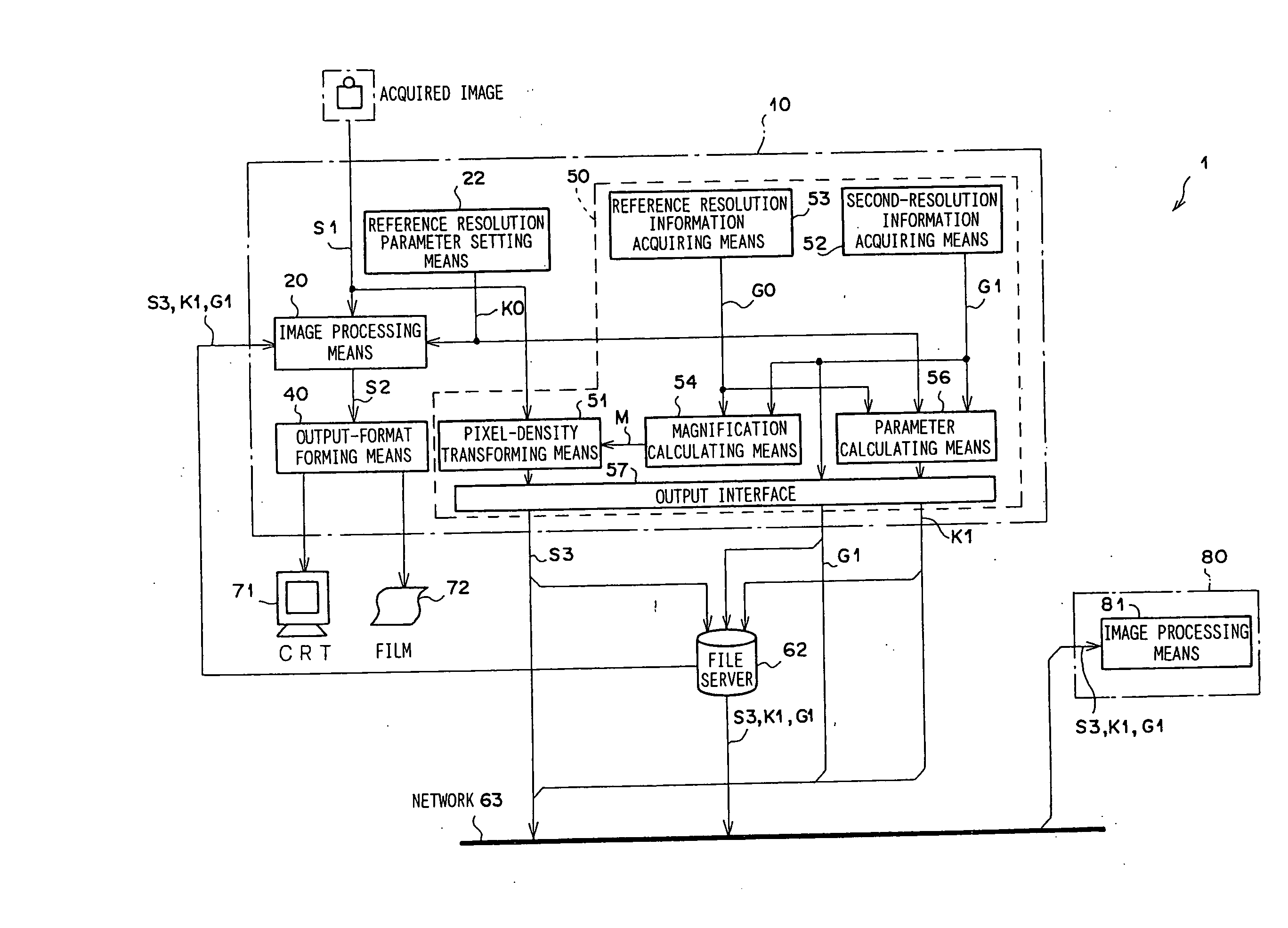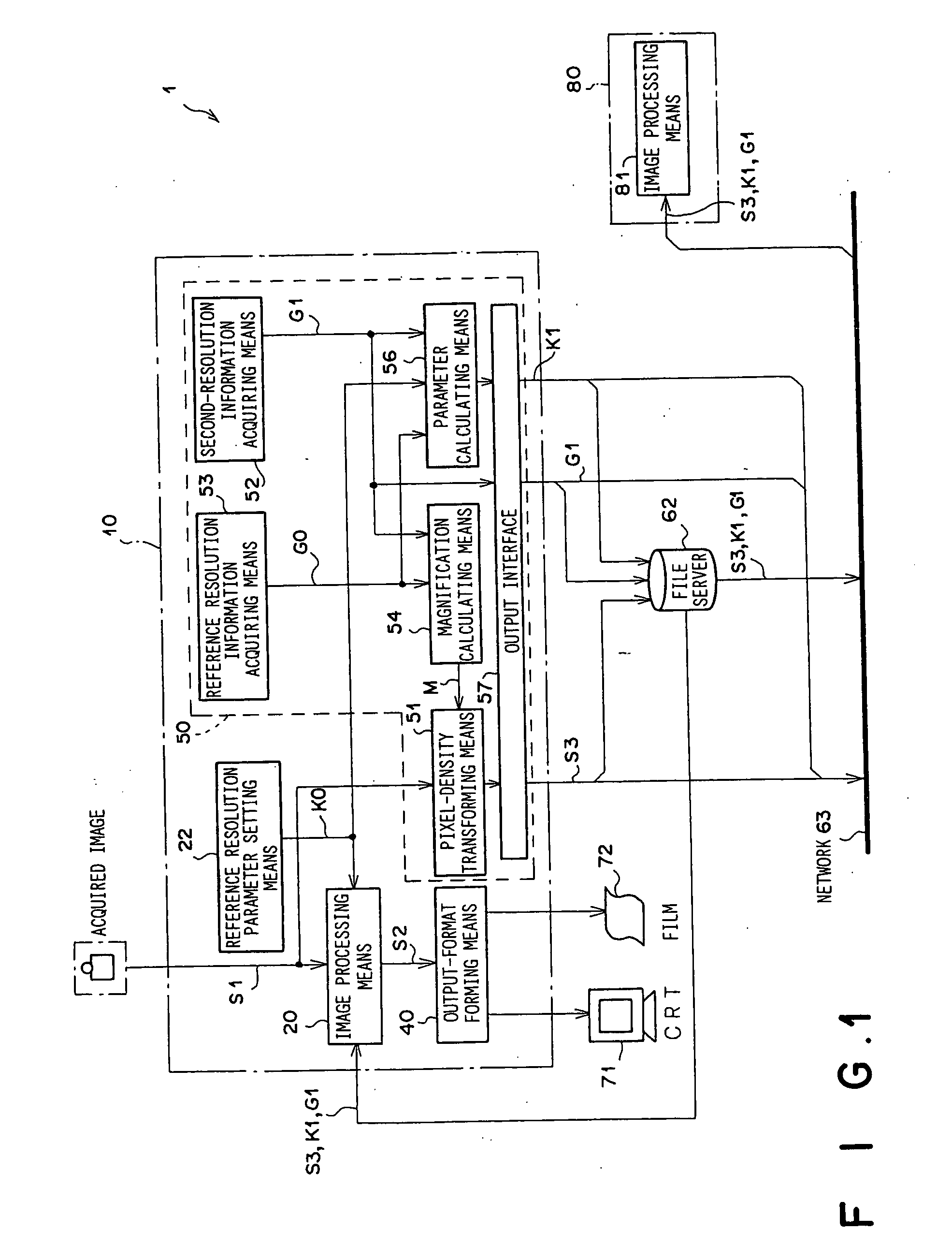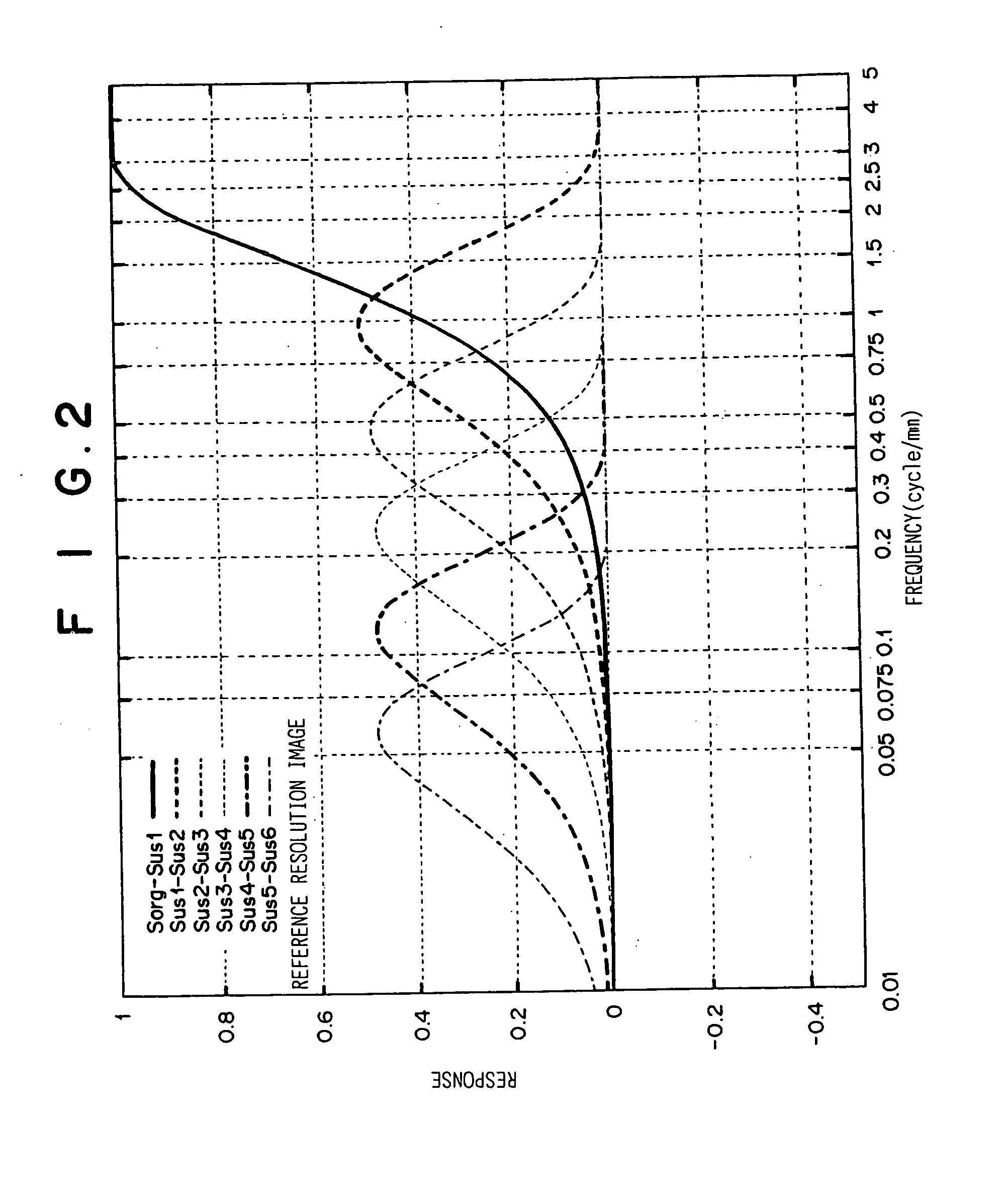Image storing-transferring method and apparatus, image processing method, image processing system, and image processor
- Summary
- Abstract
- Description
- Claims
- Application Information
AI Technical Summary
Benefits of technology
Problems solved by technology
Method used
Image
Examples
first embodiment
[0070] To solve the above problem, the parameter calculating means 56 in the first embodiment, provided in the image storing-transferring section 50, calculates the image-processing parameter K1 suitable for the second resolution, regardless of the resolution (second resolution) of an image to be stored in the file server 62 or transferred through the network 63, based on the input second-resolution information G1 and reference resolution information G0, and the reference image-processing parameter K0 correlated with the reference resolution image. The parameter calculating means 56 also stores the calculated image-processing parameter K1 in the file sever 62 in correlation with the scaled-down image, or transfers the parameter K1 to an outside unit (in FIG. 1, image processor 80) through the network 63.
[0071] A brief description will hereinafter be given of how the parameter calculating means 56 calculates the image-processing parameter K1 suitable for the second resolution. This p...
second embodiment
[0086]FIG. 10 illustrates the construction of an image processing system to which an image storing-transferring apparatus according to the present invention is applied.
[0087] In the first embodiment, the parameter K1, which corresponds to the resolution level of a scaled-down image obtained by pixel density transformation, is calculated and the calculated parameter K1 and the scaled-down image are correlated with each other and are stored or transferred. However, this second embodiment differs in that the reference image-processing parameter K0 for the reference resolution image, and the resolution information (reference resolution information G0) are stored or transferred in correlation with the scaled-down image and that the parameter K1 corresponding to the resolution level of the scaled-down image is calculated at the time of image output. That is, in the image storing-transferring section 50 of the second embodiment, as shown in FIG. 10, the parameter calculating means 56 in th...
third embodiment
[0092]FIG. 11 illustrates the construction of an image processing system to which an image storing-transferring unit is applied.
[0093] While, in the first embodiment, the parameter calculating means 56 calculates the parameter K1 which corresponds to the resolution level of a reduced image obtained by pixel density transformation, the third embodiment differs in that the processing parameter K1 is acquired by making reference to a table in which the resolution of a reduced image is correlated with the parameter K1. That is, as shown in FIG. 11, in the image storing-transferring section 50 of the image processing unit 10 of the third embodiment, the parameter calculating means 56 of the first embodiment is replaced with table storage means 58 and parameter acquiring means 59. The table storage means 58 is used for storing a table T in which the resolutions of reduced images for a great variety of sizes are correlated with the parameters K1 corresponding to the resolution levels of t...
PUM
 Login to View More
Login to View More Abstract
Description
Claims
Application Information
 Login to View More
Login to View More - R&D
- Intellectual Property
- Life Sciences
- Materials
- Tech Scout
- Unparalleled Data Quality
- Higher Quality Content
- 60% Fewer Hallucinations
Browse by: Latest US Patents, China's latest patents, Technical Efficacy Thesaurus, Application Domain, Technology Topic, Popular Technical Reports.
© 2025 PatSnap. All rights reserved.Legal|Privacy policy|Modern Slavery Act Transparency Statement|Sitemap|About US| Contact US: help@patsnap.com



